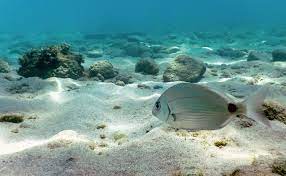Shallow Water Mining:

A group of researchers has suggested that Shallow Water Mining is in direct conflict with Biodiversity Conservation and Sustainability Goals, as the activity poses severe environmental risks.
- Shallow-water mining takes place at depths less than 200 metres and it has been touted as less destructive than terrestrial mining and less risky than mining in Deep-Water Ecosystems.
- It is considered a relatively low-risk and low-cost option to satisfy the demand for metals and minerals. Also, technology for shallow-water mining already exists.
- Shallow-water mining projects are already underway in Namibia and Indonesia, and projects have been proposed in Mexico, New Zealand, and Sweden.
- Shallow Water Mining is not a sustainable substitute for Deep-Sea Mining.
- The part of the ocean that lies below a depth of 200 meters is defined as the deep sea, and the process of extracting minerals from this area is known as deep-sea mining.
- Mining metals from the shallow-water ocean floor requires removing large amounts of sediment.
- Removing these sediments, which takes thousands of years to accumulate, means jeopardizing organisms that call it home.




